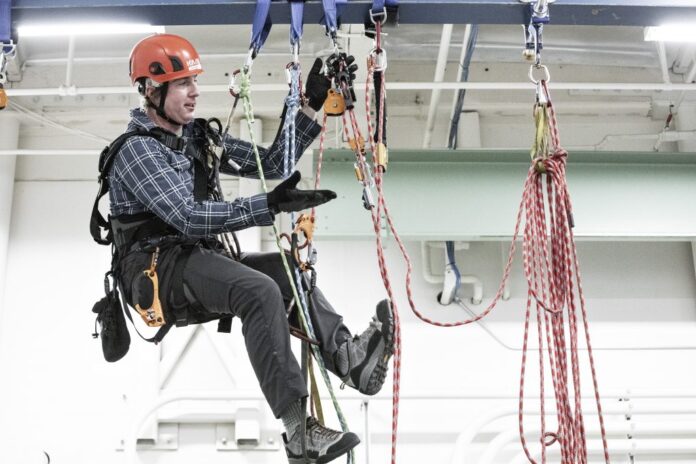
In the dynamic landscape of the modern industry, where innovation and efficiency reign supreme, there exists a group of unsung heroes who make the seemingly impossible, possible – technicians. These skilled professionals are the backbone of industries ranging from construction and maintenance to inspection and rescue operations. They utilize techniques to access challenging and high-altitude workspaces, offering a safer, more cost-effective, and environmentally friendly alternative to traditional methods.
In this comprehensive exploration, we will delve into the fascinating world of technicians, tracing the evolution of their craft, examining safety protocols, exploring the diverse industries that benefit from their expertise, and uncovering the role of technology in enhancing efficiency.
History and Evolution of Techniques
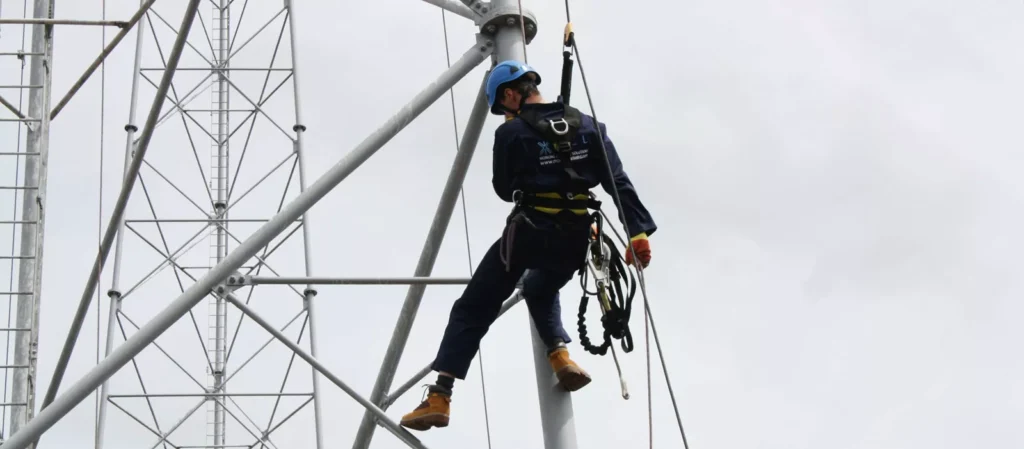
The roots of these techniques can be traced back to ancient civilizations where various forms of ropes and knots were used for climbing and traversing difficult terrain. However, the modern discipline as we know it today began to take shape in the late 1970s. Industrial applications necessitated safer and more efficient methods for accessing difficult-to-reach areas, prompting the development of specialized equipment and training protocols.
Safety Protocols and Regulations in Work
Safety is paramount in work, and stringent protocols and regulations govern every aspect of this field. The primary goal is to ensure the well-being of technicians while they perform their duties at great heights or in challenging environments. Safety measures include comprehensive risk assessments, thorough equipment inspections, and meticulous training programs.
Rope access technicians undergo rigorous training to become proficient in techniques and safety procedures. They must adhere to international standards set by organizations like the Industrial Rope Access Trade Association (IRATA) and the Society of Professional Rope Access Technicians (SPRAT). Regular equipment inspections and maintenance checks are crucial to preventing accidents, and technicians are trained to react swiftly to emergencies.
Diverse Industries Benefiting from Solutions
The applications of techniques are as diverse as the industries they serve. From the towering heights of skyscraper construction to the depths of offshore oil rigs, mechanics are indispensable. Industries that regularly employ solutions include:
1. Construction:
The construction and upkeep of high-rise structures depend heavily on rope entry specialists. They can perform inspections, repairs, and installs in hard-to-reach places without the need for scaffolding or cranes, which lowers costs and expedites project completion.
2. Oil and Gas:
Offshore platforms, drilling rigs, and refineries often require maintenance and inspection services at considerable heights. They can access these structures efficiently, minimizing downtime and ensuring the safety of workers.
3. Wind Energy:
Wind turbines are typically located in remote and elevated locations. They perform maintenance and repair work on these turbines, contributing to the sustainable energy industry’s success.
4. Infrastructure Maintenance:
Bridges, dams, and tunnels demand regular inspections and maintenance. Rope entry methods are invaluable in accessing hard-to-reach areas, ensuring structural integrity, and extending the lifespan of critical infrastructure.
5. Inspection and NDT:
Rope access is widely used in non-destructive testing (NDT) and inspection services. Technicians can reach intricate parts of machinery and structures to identify defects and assess integrity without causing disruption.
6. Rescue and Emergency Services:
They are often the first responders in challenging rescue operations, such as cliffside rescues, cave exploration, and high-rise evacuations.
7. Entertainment and Events:
In the world of entertainment, it is used for rigging stages, lighting, and sound equipment, ensuring seamless and safe performances.
Advantages of Rope Access over Traditional Methods
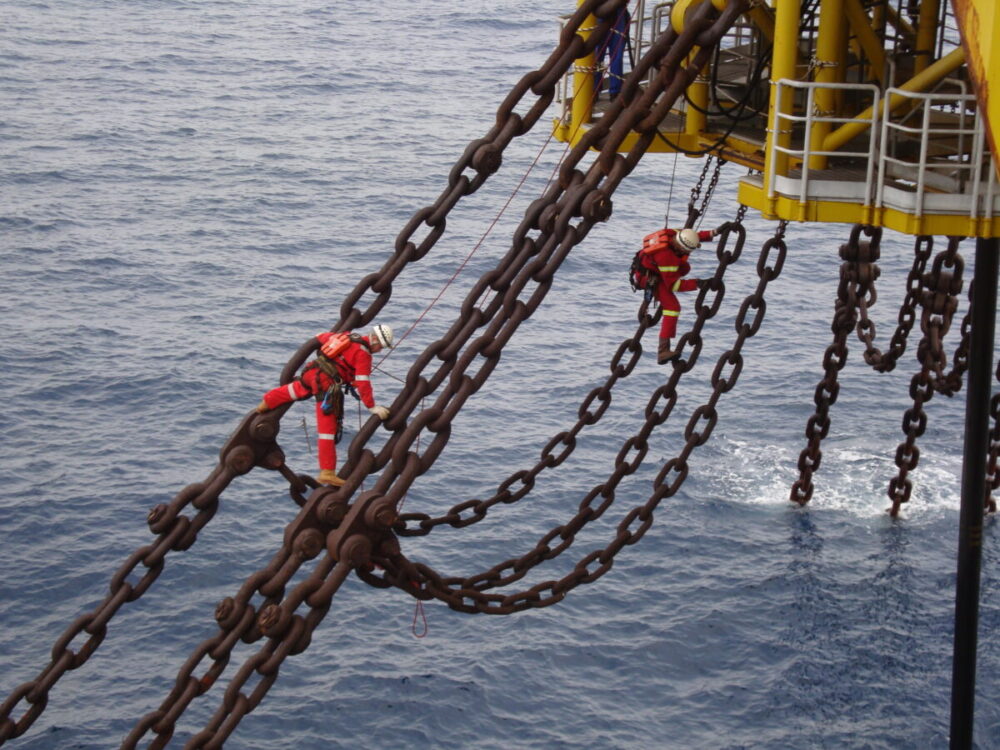
The adoption of rope access techniques is driven by their numerous advantages over traditional methods. Here are some key benefits:
1. Cost-Effective:
Rope access eliminates the need for costly scaffolding, cranes, or heavy machinery. This reduces project expenses significantly, making it an attractive option for businesses aiming to optimize their budgets.
2. Minimal Environmental Impact:
Traditional methods can have a substantial environmental footprint due to the installation and removal of scaffolding or the operation of heavy machinery. It minimizes such impacts, making it an eco-friendly choice.
3. Reduced Downtime:
They can quickly access work areas, reducing downtime associated with setting up scaffolding or machinery. This efficiency leads to shorter project timelines and increased productivity.
4. Enhanced Safety:
Safety is a priority in the design of techniques. The utilization of redundant safety mechanisms and the intensive training that technicians receive ensure their safety when working at heights.
5. Versatility:
Rope access can be employed in a wide range of applications, from painting and welding to inspection and rescue. Its adaptability makes it an ideal solution for various industries.
Training and Certification Requirements
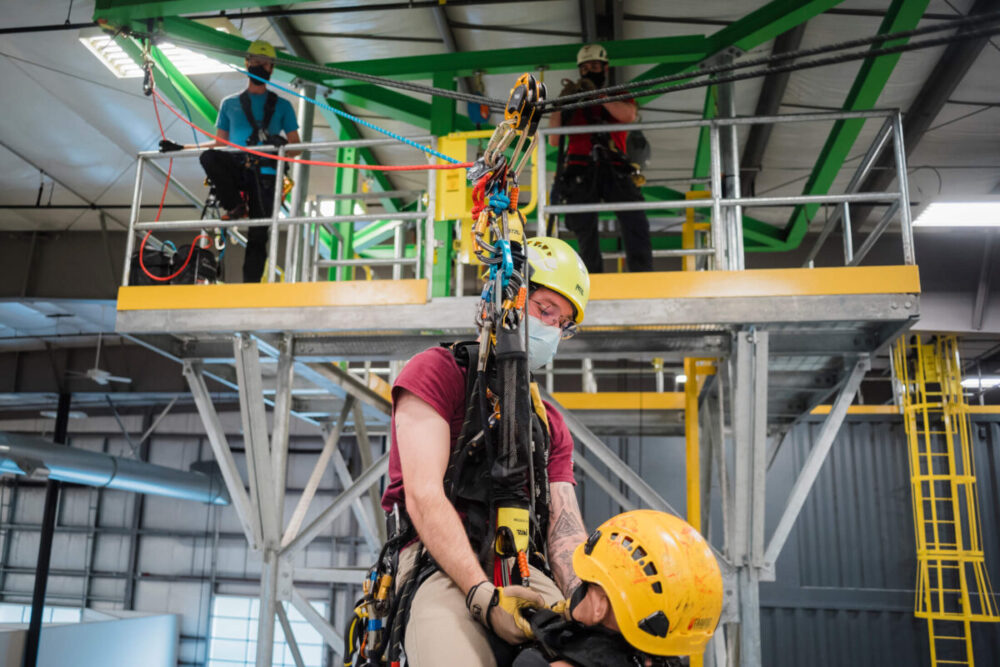
Becoming a rope access technician is no small feat. Rigorous training and certification are mandatory to ensure that technicians possess the skills and knowledge required to perform their tasks safely and effectively.
Training programs, often conducted by certified training companies, cover a comprehensive curriculum that includes:
- Knot tying and rope work
- Anchor systems
- Equipment selection and use
- Rescue techniques
- Rigging and safety procedures
After completing the training, technicians must pass a rigorous assessment to obtain certification. There are different levels of certification, typically categorized as Level 1, Level 2, and Level 3, each requiring a higher level of competence and experience. These certifications are typically valid for a specific period and require regular reevaluation to ensure continued proficiency.
Role of Technology in Enhancing Rope Access Efficiency
While pulling off their amazing accomplishments in difficult circumstances at great altitudes, experts face a variety of difficulties and hazards. Their safety is of utmost importance since they work in a hazardous environment.
One of the foremost challenges is unpredictable weather conditions. High winds, rain, or extreme temperatures can turn a routine operation into a perilous endeavor. Rigorous safety protocols and constant monitoring are essential to mitigate these natural hazards.
Equipment failure poses another significant risk. Despite rigorous inspections, the possibility of a critical component malfunctioning is ever-present. Technicians are extensively trained to handle such emergencies, but the margin for error is razor-thin.
Future Prospects and Innovations in Technology
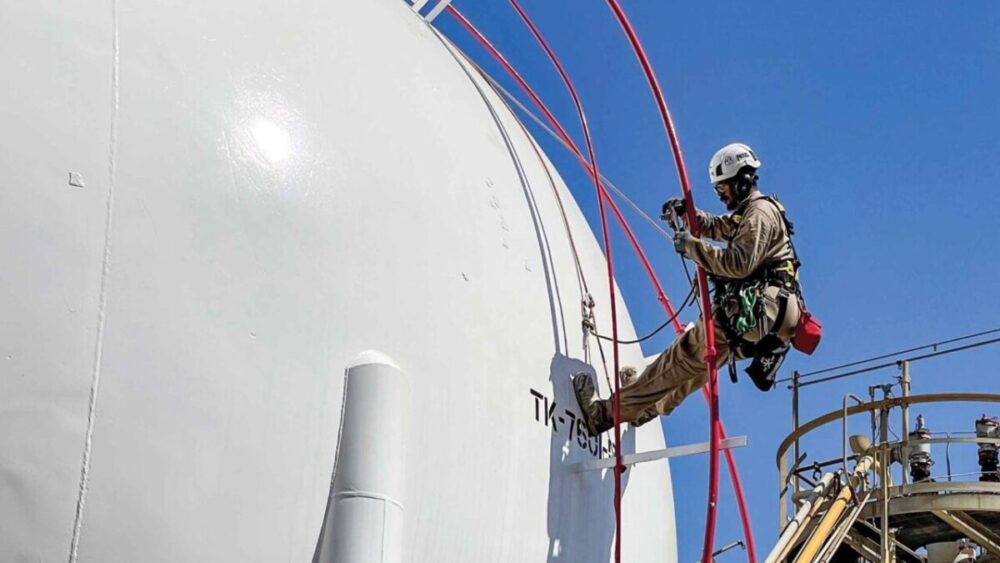
As industries continue to evolve, techniques are likely to play an even more significant role in the future. Innovations in equipment design, virtual reality training, and remote monitoring are expected to further enhance efficiency and safety. The integration of robotics and automation may also expand the scope of applications, allowing technicians to perform tasks in even more challenging environments.
Conclusion
In conclusion, technicians are the unsung heroes of modern industry, enabling progress in construction, maintenance, inspection, and rescue operations. Their dedication to safety, rigorous training, and proficiency in techniques make them invaluable assets to various industries. With continued technological advancements and a commitment to sustainability, the future of rope access looks promising, as it continues to rise to the occasion in an ever-changing industrial landscape.








